HVAC Indoor Air Quality | The Critical Role Of CO2 Sensors
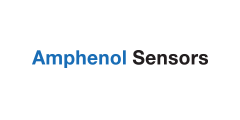



Thanks to a global pandemic, the importance of indoor air quality (IAQ) is taking center stage in many applications more than it ever has.
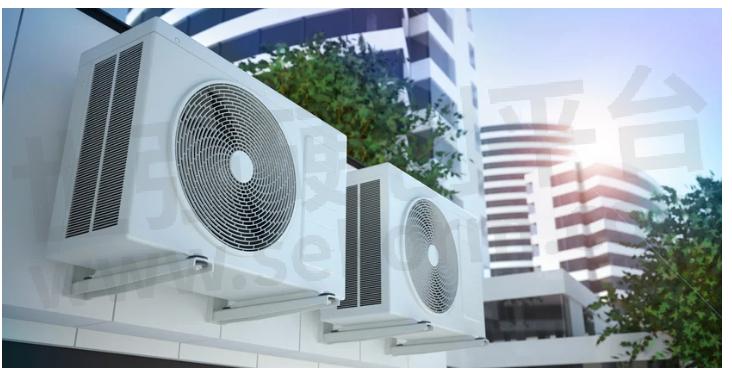
However, IAQ has been a crucial consideration for HVAC system design and performance long before COVID-19 was even a thought.
A mainstay of HVAC indoor air quality management, CO2 sensors are one of the most important monitoring devices in any system. Checking the air for a gas that is a natural byproduct of breathing and is harmful in high concentrations, these sensors provide vital data on ventilation effectiveness and occupancy levels.
While CO2 sensors don’t always get the same level of attention (something that is changing) as other indoor air quality sensors in HVAC monitoring systems, they remain one of the most important components.
The Unquestionable Importance of Indoor Air Quality
For advanced indoor climate control, there’s arguably no more important element than HVAC indoor air quality. Sure, people can immediately tell when a space becomes too hot or too cold. But things that impact IAQ can be harmful and often go unnoticed.
The health implications of poor IAQ are profound. Inadequate ventilation and filtration can lead to a build-up of pollutants, including volatile organic compounds (VOCs), particulates,CO2, and microbial contaminants. These pollutants can trigger a range of health issues, from headaches and eye irritation to more severe respiratory diseases. In settings like offices and schools, the impact of poor IAQ on cognitive functions, including concentration and decision-making, can be significant.
CO2 As An HVAC Indoor Air Quality Indicator
Carbon dioxide is among one of the oldest – yet most important – indicators that HVAC indoor air quality systems monitor. CO2 concentrations have been used for decades to assess a space’s IAQ and ventilation effectiveness.
While CO2 isn’t considered a pollutant in the same way that VOCs are, its presence in enclosed spaces does pose a threat to health and IAQ in many of the same ways.
When reaching levels over 1000 parts per million (ppm), high CO2 concentrations can lead to discomfort and health issues such as drowsiness and decreased cognitive function.
At the same time, high CO2 levels can correlate with the presence of other pollutants in a space. In simplest terms, increased CO2 concentrations usually mean there’s poor ventilation and a good chance that other indoor air pollutants and contaminants have accumulated as well.
CO2 Sensors | Indoor Air Quality and HVAC Systems
As with any type of metric, there’s more than one way to measure CO2 levels in a space. Thus, there are plenty of sensor types available for HVAC systems:
Metal oxide semiconductor (MOS) sensors
Chemical sensors
The most common type of CO2 sensor used in HVAC system design is the Non-Dispersive Infrared (NDIR) sensor. This sensor type is favored for its high accuracy and reliability. NDIR sensors operate based on the principle that CO2 molecules absorb specific light frequencies characteristic of their structure. The basic design of an NDIR sensor includes an infrared light source, a sample chamber for the air, an infrared filter, and an infrared detector. The CO2 concentration in a space is determined by measuring the amount of infrared light absorbed by the CO2 in the air passing through the sample chamber.
NDIR sensors can be broken down into two categories, both of which are nuanced and are better suited for certain applications:
Single-Channel NDIR Sensors: These sensors utilize a single wavelength detection design coupled with sophisticated firmware algorithms to maintain sensor accuracy over the life of the sensor.
Dual-Channel NDIR Sensors: These include two independent wavelength detection measurements as a method of sensor drift compensation. The second reference channel helps compensate for any changes in the light source or sensor over time, enhancing the accuracy and reliability of the measurements.
CO2 Sensor Integration: 6 Challenges & Considerations
In a perfect world, adding advanced CO2 sensor technology wouldn’t require any additional thought or accommodations. You’d simply choose the sensor you want, add it where needed, and go on with life.
While advanced sensor integration to an HVAC system – both new and existing – isn’t a new form of rocket science or trying to crack cold fusion, it still requires some forethought and careful consideration. With HVAC CO2 sensors, effective integration means considering:
Compatibility with existing HVAC systems
Sensor accuracy and calibration
Single vs. dual channel technology
Sensor placement and coverage
Communication protocols
New IAQ regulations
1. Compatibility With Existing HVAC Systems
Adding advanced sensor technology of any sort to an existing system isn’t always plug-and-play. In fact, particularly with older systems, this is rarely the case.
The simple fact is older HVAC systems were not designed with the advanced connectivity and compatibility required to interface seamlessly with modern CO2 sensor modules. Compatibility issues can arise due to differences in communication protocols, such as I²C, UART, PWM, etc.
This mismatch can lead to issues in accurate data transmission and sensor functioning. The technological disparity between new sensors and old systems might require additional interfaces or software for proper integration. In some cases, it means using new hardware, such as wireless & battery-operated equipment.
2. Sensor Accuracy and Calibration
During its useful life, CO2 sensors can lose can drift– it’s no different than any other piece of technology that’s used constantly. This drift can lead to a gradual decrease in the sensor's ability to accurately measure CO2 levels.
Though no sensor is made to last forever, choosing the right sensor and the right calibration protocol helps ensure the device remains functional and accurate for as long as possible. More than that, proper sensor selection and maintenance can lead to enhanced energy savings and improved air quality.
Reminder: One of the biggest mistakes we’ve seen in HVAC system design is integrating sensors in spots that become inaccessible. Even wireless sensor technology has its range limits. It goes without saying: be mindful of sensor placement in your system setup.
3. Single Vs. Dual Channel Technology
Back to the choices you have for NDIR CO2 sensor technology – single channel vs. dual channel.
In simplest terms, both types of NDRI sensors have applications they’re best suited for because of their functionality. With single channel sensors, you have to be considerate of the environment it’s operating in – there should only be periodic drops to ambient CO2 levels to no less than 400 ppm or else it won’t work. They’re ideal in HVAC systems in movie theaters, exhibition halls, or automotive applications.
With more technology behind them, dual channel sensors are ideal for more demanding situations where CO2 levels don’t change much, such as being installed in greenhouses, hospitals, or continuously occupied buildings. They should not be installed in places where ambient CO2 levels ever go below 400 ppm.
4. CO2 Sensor Placement and Coverage
Speaking of sensor placement …
Beyond accessibility, there's arguably no more important consideration than CO2 sensor placement. It’s simple – if the sensors are in less-than-ideal (or outright wrong) places, they can’t do their jobs.
A few tips on placement:
CO2 sensors should typically be placed within the breathing zone, which is about 4-6 feet from the floor.
Sensors should be positioned away from doors, windows, or direct ventilation sources to avoid skewed readings due to external air.
In larger buildings with varied environments, such as offices, schools, or commercial spaces, it's important to have sensors in different zones. This ensures that CO2 levels are accurately monitored in all areas, accounting for differences in occupancy and activity levels.
In areas where CO2 usage is high or where CO2 is stored, like grow rooms or storage areas, sensors might be placed lower, closer to potential leak sources. In contrast, in general office or residential areas, the placement would be in the breathing zone as mentioned above.
5. Communication Protocols
It’s one thing for a sensor to take a reading, but it’s another for its ability to interface with the HVAC’s control system.
Most HVAC systems still rely on analog communication protocols. Analog sensors typically provide a linear output, commonly in the ranges of 0-5 volts or 0-10 volts. This method of communication has been reliable and widely adopted due to its simplicity and ease of integration with various HVAC systems. However, the market is shifting toward digital communication protocols. Digital communications offer several advantages over analog, including higher accuracy, the ability to carry more detailed data, and improved noise immunity. And digital is becoming more important as more property owners are turning to building automation systems, which – you guessed it – are digital.
6. New IAQ Regulations
The regulatory landscape regarding IAQ and CO2 monitoring systems is changing.
Especially since the pandemic, new standards and guidelines are being implemented by both governments and industry groups setting more stringent requirements for HVAC system performance. At the same time, old regulations – many of which are industry standards, such as the ANSI/ASHRAE Standards 62.1 and 62.2 – are seeing updates.
Regardless of the reason why, these new rules and regs are here to stay and impact HVAC system design.
Monitoring CO2 for Better HVAC Indoor Air Quality
Indoor air quality is now seeing renewed importance in building management.
No matter how HVAC systems or regulations evolve, CO2 monitoring will always be a major component of keeping indoor environments safe for occupants. Regardless of how things change, integrated HVAC system advanced sensor technology makes it easier and more efficient to keep CO2 levels in check and spaces properly ventilated.
- |
- +1 赞 0
- 收藏
- 评论 0
本文由咪猫转载自AMPHENOL SENSORS Official Website,原文标题为:HVAC INDOOR AIR QUALITY | THE CRITICAL ROLE OF CO2 SENSORS,本站所有转载文章系出于传递更多信息之目的,且明确注明来源,不希望被转载的媒体或个人可与我们联系,我们将立即进行删除处理。
相关推荐
Delve into Industrial Sensor Calibration through Two Lenses: Logistically and Economically
Calibrating sensors that are already in use isn‘t always a quick and easy process. This article looks at this through two lenses: logistically and economically.
【技术】通过传感器技术实现EV电动汽车的HVAC暖通风系统的优化
由于电动汽车中的暖通空调使用对其电池造成负担,因此优化系统对于保持车辆的整体性能至关重要。本文Amphenol Sensors将介绍优化EV HVAC性能的必备传感器有哪些?
Sensor Technology Helps Electric Vehicle HVAC Systems Meet Air Quality Standards
In electric vehicles, recirculating air presents a bigger challenge, as many EVs use an HVAC system’s recirculation function to maintain efficiency and conserve energy. It takes less energy to heat or cool recirculated air than it does to heat or cool “fresh” outside air using an HVAC system, but those power savings come at a cost to health.
Amphenol Sensors(安费诺)温度传感器/MEMS压力传感器/C〇2、湿度、灰尘传感器选型指南
目录- Sensors Temperature Sensors Pressure Sensors CO2, Humidity & Dust Sensors
型号- DK SERIES,NDP SERIES,NHQ SERIES,AAS-AQS-UNO-RH-CO2,RL40,T5D SERIES,FMA SERIES,GC32,EC95,AB6 SERIES,RL45,GC16,GT SERIES,DKM SERIES,CTP65,M SERIES,UD20,S SERIES,CTP60,RL30,AIT SERIES,GE-1935,TH SERIES,NDL SERIES,3006,MELF,YS4019,RL35,HM SERIES,GE-2102,GE-2103,JS2945,T6715,T6613-X,AAS-AQS-UNO,TM SERIES,R85 SERIES,SM-UART-04L,YSM SERIES,FP10,NPI-15,T6715-X,FP14,NPC-120,HS12SP,NPI-19,B35 SERIES,T6713,BB07,SUF SERIES,NK SERIES,BB05,YS4020,T6703,YSM 4021,YR SERIES,BR16,A-1737,BR14,T6700,BR11,T SERIES,FP07,1403,NHQM,P85 SERIES,ZTP SERIES,JF SERIES,NDK SERIES,JS8741,NPH SERIES,JS8746,R100,JR SERIES,PTSM,MA400,SM-PWM-01C,JB SERIES,1803,BB11,B05 SERIES,T6616,EVAP,YF SERIES,JA SERIES,P100,YD SERIES,YH SERIES,MF65 SERIES,YG SERIES,MA100,JIC SERIES,YB SERIES,B43 SERIES,T9602,NPC-100,YA SERIES,YC SERIES,SC30,CTP100,BR23,T6613,PTD SERIES,PTE SERIES,YM120,HVAC,JTC SERIES,JTR SERIES,MS SERIES,YK SERIES,WTF083B001,P30 SERIES,YL SERIES,YP SERIES,PTA SERIES,PTH SERIES,ND SERIES,B07 SERIES,PTF SERIES,PTO SERIES,P60 SERIES,JM SERIES,YS SERIES,T6600,RL1004,BR32,JS6780,JI SERIES,HS30P,JW SERIES,A1447-A1450,JS SERIES,TP SERIES,JE SERIES,JC SERIES,GE-1856,1703,B14 SERIES,T6615-X,GE SERIES,R65 SERIES,DC95,JYA SERIES,T3000,EVAP A1424,SC50,BR42,A-1266,C100,GE-1923,NPP-301,706 SERIES,2006,NKA SERIES,AS SERIES,B10 SERIES,P25 SERIES,NHQMM,GC11,RL20,CL SERIES,P20 SERIES,GC14,GE-1920,NPC-1220,JP SERIES,P65 SERIES,ES SERIES,CTP85,T6713-X SERIES,BR55,MC65,KU SERIES,TK95,NDM SERIES,R60 SERIES,NDU SERIES,NPC-1210,TC SERIES,JL SERIES,RL14,JD SERIES,RL060628,RL10
Amphenol Sensors(安费诺)建筑及工业应用传感器选型指南
目录- Chip Cap 2完全校准的温湿度传感器 Telaire Ventostat®T8700壁挂式温湿度变送器 Telaire Ventostat®T8031 CO2小型风管式C02传感器 Telaire®T8041/T8042 分管式C02传感器 Telaire T8100-R系列挂壁式C02和温度变送器(带继电器) Telaire®7000室内空气品质监测器 Telaire VaporstatTM 9002红外露点变送器 Telaire®配件 Telaire HumiTrac™温湿度变送器 T9602湿度与温度传感器 AAS-53系列水管型温度变送器 ADT/AOT/AIT温湿度变送器使用说明书
型号- P40250128,CC2D265,P40250129,P40250126,P40250127,P40250125,P40250122,P40250123,DC95F302W,P40250120,P40250121,T8031,CC2D255,EHR-4,T8100-D-R,P40250139,K53,T8700,CC2A23,PT1000A,AIT,PT1000B,CC2A25,P40250133,P40250131,T2075NG,P40250130,T804K0-10V,T1508,T8200-D-5P,T8042-5VI0-5V,T9602-5-A-1,NI1000,9002,T9602-3-A-1,T5100,P40250149,CC2A35,T8700-E-D,P40250147,0-5000PPM,P40250144,PT100A,T7001I,P40250145,PT100B,P40250142,P40250143,T8100,S4B-EH,CC2A33,P40250141,CC2D235,CC2D355,T7001,PT1000,T2072,T7001D,CC2D25,T9602-3-A,T8042I0-10V,CC2D23,P40250156,T8041,T8100-R,P40250151,T8042,P40250150,T9602-3-D,NTC10K,CC2025,7000,T9602-3-D-1,CC2D35,T9602,CC2D33,ADT,NTC15K,T8200,CC2D335,CHIPCAP 2,NTC10K-II,T2090,T1551,T1552,MPNT3D03750M4,NTC20K,T2007,T8700-D,T8700-E,T8100,T2080,T8100-EC,P40250109,PA0250118,T8100-E-D-GN-5P-R,PA0250115,T1505,P40254275,P40254276,P40254277,P40250189,P40250186,P40250184,P40250185,T8300,P40250182,P40250183,P40250181,AAS-53,8000,PT100,T7001SK,P40250119,NTC10K-A,AOT,P40250117,T9602-5-A,P40250113,P40250114,P40250111,P40250112,DC95F103W,T2076NG,P40250110,P40250193,T9602-5-D,T8001,P40250191,7001D,P40250192,T8002,T9602-5-D-1,MPNV12R30M 16004616,B4B-EH-A,P40250190,T8041-5VI0-5V,RS485,NTC10K-III
Amphenol Sensors(安费诺) 汽车传感器选型指南
目录- 汽车传感器解决方案介绍 车厢空气质量系列传感器 排放处理系列传感器 新能源汽车传感器应用 测量汽车应用中最为关键的参数
型号- SM-UART-01L,PT200,T6703,TPMS,DPS,G-CAP2,SM-UART-01D,A2103,NPI-19,T6713,A-2102,EGR,A-2103,NPP-301,GE-1935,A-2121,ZTP,DPF,SM-UART-01L+,SM-PWM-01C,NPX1
【应用】空气质量传感器模块MICS-VZ-89TE用于空气净化器tVOC和CO2气体浓度检测,PWM/IIC数字接口输出
空气净化器是通过利用各种传感器技术检测室内空气质量,从而进行净化室内空气的设备装置,如图1所示为空气净化器产品框图。本文推荐Amphenol Sensors(安费诺)子公司SGX推出的一款用于室内空气质量检测的传感器模组MICS-VZ-89TE产品,该传感器模块采用最新的MOS传感器技术与智能检测算法相结合,可以实现检测室内环境中的tVOC和CO2浓度含量,用于系统的整体控制。
PID-10.6EV 40规格书
描述- SGX PID传感器是一款用于检测VOCs(挥发性有机化合物)的高精度传感器,适用于PPM(百万分之一)和PPB(十亿分之一)浓度范围。该传感器对常见大气气体(如CO2、CO、SOx、NOx、水蒸气)不敏感,具有高湿度和长期(温度)稳定性。SGX PID传感器广泛应用于多个行业和领域,包括工业健康与安全、受限空间进入、空气质量监测、HVAC、泄漏检测、土壤污染和修复等。
型号- PID-10.6EV 40
Amphenol Sensors(安费诺)/Telaire 空气质量传感器选型指南
目录- OEM CO2模块 OEM集成智能粉尘传感器 OEM恶劣环境传感器 空气质量工程开发工具包 其他传感技术
型号- T6613-X,SM-UART-01L,T6715,T6615,T6703,T6615-X,T3000,T9602,T61715,T6715-X,T61703,SM-PWM-01S,T6700,T61713,T6713-X,T6600,T6713,T61700,T6613,SM-PWM-01C-JS,AM-PWM-01C-JS,T6000,T6715X,SM-PWM-01C
【产品】设计小而紧凑的微型NDIR式二氧化碳传感器T6700系列
Telaire(Amphenol Sensors(安费诺)旗下品牌)的T6700系列产品为微型NDIR式CO2传感器,其精度和可靠性可达到和许多大尺寸传感器一样的性能。较小的尺寸使得传感器可以方便的集成到终端和设备中,这样即可使产品的耗电量远低于市面上的其他产品。
PID-10.6EV 3规格书
描述- SGX PID传感器是一款用于检测VOCs(挥发性有机化合物)的高精度传感器,适用于PPM和PPB浓度范围。该传感器对常见大气气体(如CO2、CO、SOx、NOx、水蒸气)不敏感,具有高湿度抵抗性和长期稳定性。SGX PID传感器广泛应用于多个行业,用于检测气体和蒸汽。
型号- PID-10.6EV 3
【技术】采用ABCLogic自校准功能的CO2传感器,可在现场安装后自动校准
本文介绍了Amphenol Advanced Sensors的技术ABCLogic的一项关键专利功能,该技术使CO2传感器能够在现场安装后自动校准。 此功能可以消除二氧化碳传感器存在的漂移和维护问题。 ABCLogic是Telaire商用级单通道CO2控制器(具体型号包括T8100,T8300,T5100,T8041 / 42,T8031,T6613)的一项功能。
【产品】使用非分散红外NDIR技术的红外双气体传感器IR25系列,主要用于采矿应用
Amphenol Sensors(安费诺)旗下的SGX生产的IR25系列红外气体传感器,使用非分散红外(NDIR)技术来识别和监测气体。利用安装在光/气腔内的热电探测器上的红外光源和特定滤波器,可识别单个气体或气体类型,并测定其浓度。该系列传感器可用于采矿应用中,对气体浓度进行可靠监测。在采矿应用中,传感器尺寸受限,同时环境比较危险,需要装防爆外壳。
PID-10.0 EV 100规格书
描述- SGX PID传感器是一款用于检测VOCs(挥发性有机化合物)的高精度传感器,适用于PPM和PPB浓度范围。该传感器对常见大气气体(如CO2、CO、SOx、NOx、水蒸气)不敏感,具有高湿度抵抗性和长期稳定性。SGX PID传感器广泛应用于多个行业,用于检测气体和蒸汽。
型号- PID-10.0 EV 100
Amphenol Sensors(安费诺)Telaire T6723-8K5二氧化碳传感器预警模块数据手册
描述- Telaire T6723-8K5是一款专为加热器设计的高精度CO2报警模块。该模块具有工厂校准功能,可在8500ppm CO2浓度下触发警报信号,并在7500ppm CO2浓度下提供通风警告信号。它符合最新的NF128 LNE测试协议,适用于原始设备制造商(OEM)。
型号- B5B-EH-ALF,B5B-EH-A,T6723-8K5
电子商城
品牌:AMPHENOL SENSORS
品类:Assembly NTC temperature sensor
价格:¥5.0624
现货: 2,000
品牌:AMPHENOL SENSORS
品类:Surface Mount Pressure Sensors
价格:¥97.5000
现货: 51
品牌:AMPHENOL SENSORS
品类:Air Quality Sensors IR LED Dust Sensor
价格:¥40.5000
现货: 35
品牌:AMPHENOL SENSORS
品类:Board Mount Pressure Sensors
价格:¥253.8839
现货: 30
品牌:AMPHENOL SENSORS
品类:Low Pressure Compact Sensors
价格:¥125.9778
现货: 25
品牌:AMPHENOL SENSORS
品类:Board Mount Pressure Sensors
价格:¥253.8839
现货: 25
品牌:AMPHENOL SENSORS
品类:Board Mount Pressure Sensors
价格:¥227.5314
现货: 25
现货市场




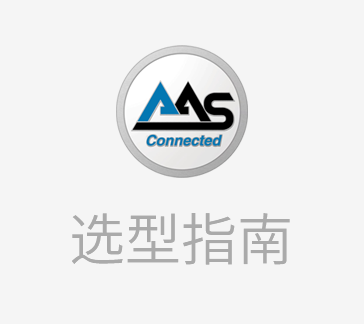

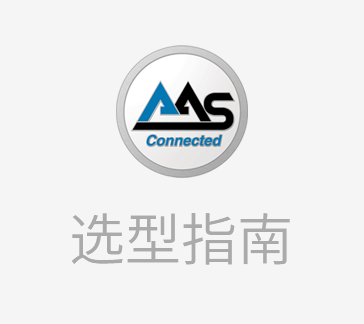



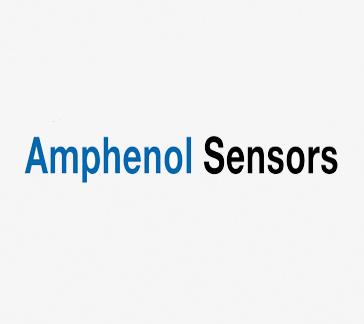

























































































































































































登录 | 立即注册
提交评论